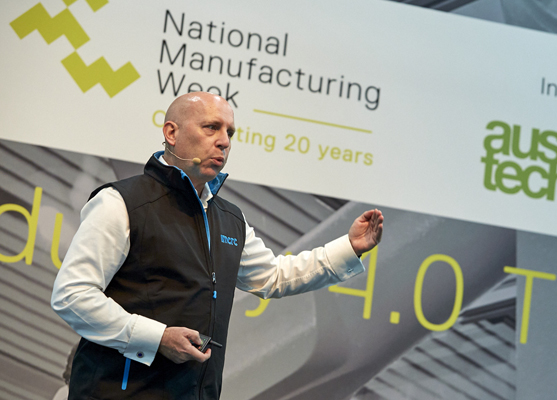Breaking the mould: How Industry 4.0 is modernising the way manufacturers do business
The technologies that are driving the fourth industrial revolution are becoming increasingly familiar. In fact, many of them have been around for some time. What, then, makes Industry 4.0 revolutionary? According to industry experts, getting on board requires transforming manufacturing business models.
The federal Coalition, which once again won government, has also won for itself the task of driving forward innovation in Australia’s manufacturing sector. During the election campaign, prime minister Scott Morrison announced a $50 million Manufacturing Modernisation Fund, which he said would stimulate “at least $160 million” worth of business investment in new technologies and processes. The Fund is to reportedly provide grants to small- and medium-sized manufacturing businesses to help them modernise, grow and employ more workers, and has a particular focus on manufacturers in regional and outer-suburban Australia. The funds will co-fund capital investments that help them scale- up, invest in new technologies and develop new high-value products.
In a statement put out by the Liberal Party in the leadup to election day, the incumbent government indicated that it expected the $50 million in public money to be bolstered with a further $110 million in investment from private industry. It stated that $20 million would be provided for matched grants of between $50,000 and $100,000 for smaller- scale technology and efficiency investments, while $30 million would be provided for larger-scale grants of up to $1 million, with a $3 co-contribution from industry for every $1 from government, to support more transformative investments in technologies and processes.
This push towards “modernising” the Australian manufacturing sector builds on the government’s investment of $100 million in the Advanced Manufacturing Fund, its creation of the Advanced Manufacturing Growth Centre (AMGC), and its $40 million in funding for the Innovative Manufacturing Cooperative Research Centre (IMCRC).
At this year’s National Manufacturing Week (NMW) in Melbourne, representatives from both the AMGC and the IMCRC gave their thoughts on the state of manufacturing in Australia and, in particular, the drive towards Industry 4.0.
Forgoing the technology fixation
The aim of the IMCRC is to enable manufacturers to get on board with the transformations being wrought by technological innovation and development. David Chuter, IMCRC’s CEO and managing director, an experienced communicator of these issues and a passionate advocate for advanced manufacturing, spoke about why Industry 4.0 is so important for small-to-medium manufacturing companies in a competitive market environment. “Trust me, if you are a manufacturer and you are not on the Industry 4.0 journey, there are companies out there well ahead of you and they are investing in research and development (R&D) and technology to create fantastic new business models,” Chuter told the NMW audience.
In fact, the major theme of Chuter’s presentation was less the importance of adopting new technologies than the necessity of transforming business models in response to technological innovation: in other words, the old way of doing things is holding manufacturing companies back from what they could be achieving. Chuter said that it would be wrong to think that the rate of change in industrial developments is linear. Rather, as Gordon Moore stated in his “law” regarding the speed of semi-conductor development, technological change is exponential and ever-more rapid in its transformations. The period of time between the beginning of the first industrial revolution (based on steam) in the late eighteenth century and the beginning of the second (based on electricity) in the late nineteenth century was approximately 100 years. The advent of the third revolution, involving computers and robotics, began in the latter half of the twentieth century. And now, said Chuter, with the developments in digitalisation that have been unleashed, we are already in the midst of the fourth industrial revolution. “We’re not sitting here in 2070, are we? We’re sitting here in 2019 – we’ve got there is less than half the time.”

